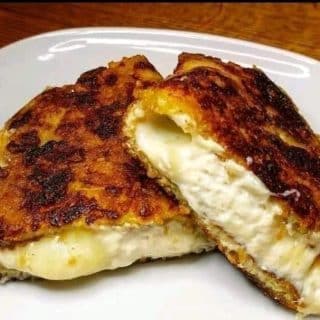- April 4, 2023
Instructions:
Keto Diet Tips
No fruit, unless it’s berries in moderation…
No wheat
No sugar
No grains
No pasta
No potatoes
No rice
No beans
No starches
No milk as it’s loaded with sugar. ( unsweetened almond milk is recommended.)
HWC (Heavy whipping cream) is good in coffee or whatever you would like to use it for.
Meat, cheese, eggs, vegetable, nuts, and healthy fats. It’s simple. Stick to that, and you should be ok!
Vegetables that should be avoided are…
Sweet potatoes
Corn
Peas
Potatoes
Carrots – can be used in moderation, just don’t go over board. They are full of starches and not recommended.
Make sure to drink half your body weight In oz of water as well if you aren’t getting the adequate amount of water it can be bad for your kidneys! This applies for all forms of keto.
Do not forget your electrolytes, they are needed daily.
A good form of electrolytes is:
Powerade zero
Pickle juice
Pink Himalayan salt added to your food
Strict keto – counts all macros, do not eat processed foods.
Lazy keto – doesn’t track all macros, still eats processed foods, as long as they are on plan
Macros are a break down of the calories you intake for the day. Which should be…
5% carbs
20% protein
75% fat
Carb manager is a great app to track macros
Carbs are a limit – try not to go over your carb limit.
Fat is a lever – you don’t have to meet your fat macro, it’s simply there to help you get full.
Protein is a goal- try your best to reach your protein goal, but try not to go over. Excessive amounts of protein can cause you to stall in weight loss.
Anything other than this food group selection would be considered low carb. Also, if you are in ketosis, and eat outside of this food group not only could it take you out of ketosis, but it could spike your blood sugar! Which can make you sick.
Hope this helps.
If you are a keto newbie- This should help
Meats: ZERO CARBS
- Beef- Ground beef, Steak, Ribs, and Roasts
- Pork- Chops, Ribs, BACON, Loins, sausage
- Chicken/Turkey- Thighs w/skin or wings are the best because breasts are high in protein. However, you CAN eat breasts, just have to eat more fat to compensate.
- Fish- Tuna, Salmon, Cod, Haddock, etc.
- Shrimp/Lobster- Go crazy, use lots of butter!
- Pepperoni
Cheese: MOST are no carb, almost all are low carb
- Mozerella & Cheddar- Buy in bulk, they freeze well and are insanely versatile!
- Colby jack, pepper jack, monterrey jack
- Taco style, Mexican style
- Parmesan, Asiago
- Ricotta- Freezes well, very versatile
- Cottage cheese- Good to throw in your lunch with berries, usually around 4-8g of Carbs per serving
- Cream Cheese- Freezes very well, this is one of the things that I always glance at whenever I go to the store, and always buy a bunch of if it’s under 75 cents per 8oz.
Vegetables: No potatoes! Get your carbs from above ground veggies!!!
- Leafy greens- Spinach, Spring mix, Kale, Romaine
- Zucchini- Great for a noodle substitute!
- Avacado- Awesome source of natural fat!
- Eggplant
- Brussels sprouts
- Tomato
- Spaghetti Squash- Versatile, makes a great spaghetti substitute and is even great for making hash browns!!
- Cucumber
- Peppers- Jalepeño, banana, green/red/yellow/ orange bell
- Broccoli- Great with cheese, steamed or just raw!
- Asparagus- Awesome roasted or sautéed with bacon and garlic!
- Cauliflower- AWESOME potato substitute!!
- Celery- Great with cream cheese or all natural peanut butter!
- Cabbage
- Pickles (Read nutrition labels, watch for sugar and carbs)
- Olives
- Green beans- Awesome sautéed in bacon grease with garlic, (watch portion size, though).
- Onions- Red, yellow: use somewhat sparingly, to taste
Fruits: Most are a no-no, especially bananas, oranges and grapes.
- Strawberries
- Blueberries
- Raspberries
- Blackberries
- Lemon/Limes- Adds great flavor!
Nuts (grams of Carbs per 100 grams, or 3.5 oz)
- Pecans/ Brazil (4g)
- Macadamia (5g)
- Hazelnut/Walnut/Peanut (7g)
- Pine (9g)
- Almond (10g)
- Pistachio (18g)
- Cashew (27g)
Oils/Fats
- Coconut Oil
- Butter: Kerry Gold is best but just make sure it’s REAL butter and not a spread or margarine
- Olive Oil
- Vinaigrette
- Hollandaise
- Bacon/sausage grease
- MCT oil- easily ordered online/in specialty stores
Dressings/Condiments/Fats
- Ranch, Blue cheese, Cesar, Thousand Island, Balsamic- Watch carbs/ sugar, but there’s tons of brands, so you can find one you love!
- Mayo- Natural/organic is best, but I use Hellmann’s all the time.
- Aioli
- Heinz “NO SUGAR ADDED” Ketchup or sugar free ketchup
- G. Hughes brand sugar free BBQ sauce
- Yellow/Spicy Brown Mustard
- Soy sauce
- Hot sauce
Liquids: Use as base for sauces/soups
- Heavy Whipping Cream (HWC)
- Broths/Stocks: Stay away from reduced fat. Bone broth is awesome!
Snacks
- Pepperoni
- Slim Jims/jerky (watch carbs)
- Homemade cheese its/ tortilla chips
- Cheese
- Pork rinds (0 carbs, very versatile. Can be used as breading, nacho substitute or even sprinkled with cinnamon & stevia and eaten like cereal with Almond milk and tastes like cinnamon toast crunch!)
Drinks
- WATER- Lots of it!
- Crystal Light- Tons of options and very convenient!
- Tea with stevia
- Coffee- Add a Tablespoon of coconut oil or MCT oil, Stevia, heavy whipping cream and imitation vanilla/ Hazelnut or Cocoa powder & peppermint BOOM Homemade creamer!
Alcoholic Beverages
- Beers (grams of carbs per 12 oz serving)
Bud Select 55 (1.9)
MGD 64 (2.4)
Rolling Rock Green Light (2.4)
Michelob Ultra (2.6)
Bud Select (3.1)
Beck’s Premier Light (3.2)
Natural Light (3.2)
Michelob Ultra Amber (3.7)
Coors Light (5)
Amsterdam Light (5)
Bud Light (6.6)
- Vodka: Whipped Vodka & flavored water or pineapple Pinnacle with crystal light are a couple of my favorites!
- Whiskey shot (0g carbs)
- Brandy shot (0g carbs)
- Dry Martini (0g carbs)
- Tequila shot (0g carbs)
- Champagne (~1g per serving)
- Dry wine (~2g per serving)
Sweeteners
- Stevia drops (0g)
- Erythritol (0g)
- Truvía (0g)
- Monkfruit (0g)
Other common Ingredients I use
- Almond flour
- Spices: Garlic powder, onion powder
Dont forget your electrolytes, they are needed daily.
- A good form of electrolytes is:
- Powerade zero
What is the Ketogenic Diet?
The ketogenic diet is a low-carbohydrate diet in which high-fat foods and foods containing sufficient protein are primarily used to treat refractory epilepsy, which is difficult to control in medicine primarily in children. Another name for the ketogenic diet is the keto diet.
As a result of limited medical studies, it has been seen that the ketogenic diet helps in weight loss as well as benefits against some diseases and health problems such as epilepsy, Alzheimer’s, diabetes and cancer.
However, continuing it uninterruptedly for a long time can lead to dangerous consequences in terms of health. It is recommended that the decisions to start the ketogenic diet and maintain the diet should be taken carefully, under ideal conditions, by consulting a dietitian, since the researches have not yet been carried out to a sufficient extent by medical professionals.
In studies where the ketogenic diet was used for the treatment of epilepsy, more than half of the cases showed varying degrees of reduction in epileptic seizures. In a certain percentage of patients, the ketogenic diet has many similarities with the Atkins diet and other low-carb diets.
The basis of the ketogenic diet is to greatly reduce the body’s external carbohydrate intake. This reduction in carbohydrate intake puts the body in a metabolic state called ketosis. In the state of ketosis, the body becomes much more efficient at burning fat for energy, and the body begins to meet its energy needs from fats rather than carbohydrates.
In this process, fat is converted into ketones in the liver, which can even be used to provide energy for the brain. Ketogenic diets can cause a large drop in both blood sugar values and insulin levels.
What Are the Types of Ketogenic Diets?
There are different types of the ketogenic diet. The most common among these are the Standard Ketogenic Diet (SKD), the High Protein Ketogenic Diet, the Cyclic Ketogenic Diet (DKD), and the Targeted Ketogenic Diet.
(HKD) Cyclic or targeted ketogenic diets are more advanced methods and are mainly used by bodybuilders or athletes, their use is not recommended by medical professionals without the support of a professional dietitian. The most scientifically researched type is the standard ketogenic diet.
The standard ketogenic diet maintains a very low-carb, moderate-protein, and high-fat diet. The diet usually contains 75 percent fat, 20 percent protein and only 5 percent carbohydrates.
The high-protein ketogenic diet is similar to the standard ketogenic diet, but contains more protein. This diet is usually 60 percent fat, 35 percent protein and again 5 percent carbohydrates.
What Are the Benefits of the Ketogenic Diet?
The ketogenic diet originally emerged as a tool for the treatment of neurological diseases such as epilepsy. Research on this subject has revealed that the ketogenic diet can cause a great reduction in seizures in epileptic children. However, several studies have subsequently been conducted that suggest that the ketogenic diet may provide many health benefits, especially in metabolic, neurological, or insulin-related diseases.
The ketogenic diet, when done in the right way, can help you lose weight in a healthy way and minimize risk factors for various medical problems and diseases. It has been shown to be effective at losing weight without counting calories or devoting too much attention to food tracking.
The ketogenic diet can improve risk factors for heart disease, such as body fat, HDL cholesterol levels, blood pressure, and blood sugar. It has been observed that the keto diet can reduce the symptoms of Alzheimer’s disease and slow its progression.
In addition, small studies have shown that it helps relieve symptoms of Parkinson’s disease, reduces insulin levels, which can play an important role in polycystic ovarian syndrome, and leads to a reduction in acne and acne due to lower insulin levels as well as the use of less sugar or processed foods.
Studies show that the ketogenic diet helps reduce the effects of concussions and accelerate the recovery process after injury. However, research in these areas is small, limited in scope, and the long-term effects have not yet been conclusively revealed.
Ketogenic Diet for Diabetes and Prediabetes
Diabetes is defined as changes in metabolism due to high blood sugar and impaired insulin function. With the help of a ketogenic diet, it may be easier to lose excess fat, which is closely related to Type 2 diabetes, prediabetes and metabolic syndrome. In a limited-scale study of people with type 2 diabetes, one-third of the participants discontinued their diabetes medication altogether.
In another study, it was seen that the ketogenic diet improved insulin sensitivity by 75 percent in the short term, but no progress has been made yet on how its effects will last in the long term.
What are the Side Effects of the Ketogenic Diet
The ketogenic diet is not a completely beneficial or completely natural method. It was created primarily for the treatment of a medical problem and, like many treatment methods, it has various side effects. Although it is safe for healthy individuals under normal conditions, it can cause significant changes in the body due to changing the metabolism and therefore cause some medical problems.
Medical studies are ongoing about the side effects of following this diet for a long time on the body. Continuing this diet for a long time, especially in children, may cause a slowdown in growth. It has also been observed that the risk of kidney stones, which is normally 1/1000, increases to 1/20 during the ketogenic diet process. It is possible that the intake of carbonic anhydrase inhibitors or potassium citrate may limit this risk to a certain extent.
In addition, during the adaptation of the body to the diet, certain side effects can be seen at the beginning. All of these side effects are popularly known as keto flu. It is caused by the changes in the metabolism that the body undergoes while getting used to ketogenic energy consumption, that is, ketosis. These side effects continue for two to seven days under normal conditions.
Among the side effects of the ketogenic diet, there are feelings of lack of energy, tiredness and weakness, slowing down in mental functions, increased hunger, various sleep problems and the need for constant sleep, nausea, digestive disorders and decreased performance during exercise.
To minimize these side effects, it is possible to gradually reduce carbohydrate consumption over several weeks before starting the ketogenic diet. This can teach the individual’s body to burn more fat before completely eliminating carbohydrates. In the first period of starting the ketogenic diet, it is important not to count calories until the body adapts and not to avoid eating until satiated.
Smell may occur in the urine or breath while following the ketogenic diet. This is due to waste and waste that the body produces during ketosis.
A ketogenic diet will also change the water and mineral balance in the body. For this reason, it is recommended that individuals consult a dietitian and learn how much extra salt, sodium, potassium and magnesium they should take, at least initially.
It is important to get these minerals in the normal diet, without benefiting from a supplement. Supplements containing these are necessary to make up for the lack of micronutrients normally supplied to the body by the foods avoided during the ketogenic diet process.





This is great keto list & advice!
Hello. What can I use as a good substitute for almond flour? I’m allergic.
Can’t wait to try your crack keto biscuits. Thank you so much. ❤️